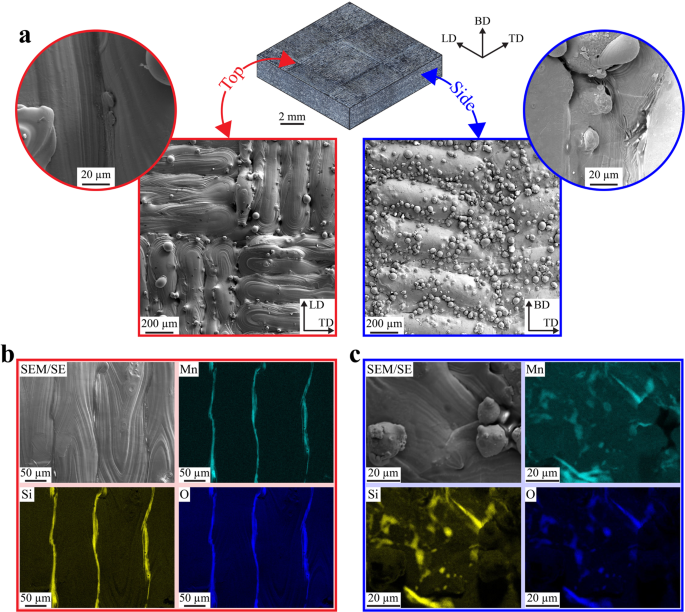2024-03-19 アメリカ合衆国・ローレンスリバモア国立研究所(LLNL)

・ LLNL が、3D プリント作製したステンレス鋼 316L(SUS316L)の点食の原因を解明。
・ 点食は金属の局部腐食の一種で、金属表面の小さな孔から内部へと腐食が進行して起こる。SUS316Lは、優れた機械強度と耐腐食性から海洋アプリケーションに活用されている材料。3D プリントによるオブジェクトの作製後もこれらの特性を維持するが、点食は免れることができない。
・ 本研究では、「スラグ」と呼ばれる微小粒子によって点食が発生することを特定。このスラグは従来のSUS 製造でも形成されるが、チッピングハンマー等の道具を使って取り除かれている。3D プリントにおけるスラグの形成・堆積に関する情報は無きに等しい。
・ プラズマ集束イオンビーム加工、透過型電子顕微鏡(TEM)および X 線光電子分光装置を組み合わせた先進技術を用い、3D プリント作製した SUS 部品について、擬似海洋環境下での腐食プロセスにおけるスラグの役割を調査した。
・ その結果、スラグが途切れて塩化物に富んだ水を浸蝕させ、SUS 部品が大きく損なわれることを発見。また、スラグには海水環境に晒されると溶解する金属含有物が含まれ、それが腐食の進行に関与していることもわかった。
・ 本研究は、腐食プロセスの科学的理解を深めるだけでなく、より優れた材料と製造技術の開発を導く、腐食の課題に対処する重要な進展を示すもの。スラグの背後のメカニズムと点食との関係を解明することで、強度・耐久性に加え、海水の腐食力にも高い耐性を持つ SUS 部品の製造への取り組みを推進し、海洋アプリケーションの領域外、他の産業や過酷な環境下での利用の可能性を開く。
・ 次には、3D プリント作製した SUS316L 部品の性能と寿命の向上のために、粉末原料からマンガンとシリコンを除去してスラグの形成を制限・回避する。レーザーの溶融痕と溶融の挙動の詳細なシミュレーションを分析してレーザープロセスのパラメータを最適化し、表面でのスラグの形成を回避する。
・ 本研究には、LLNL の Laboratory Directed Research and Development (LDRD)プログラムが資金を提供した。
URL: https://www.llnl.gov/article/51026/llnl-researchers-uncover-culprits-behind-pitting-corrosion-3d-printed-stainless-steel
<NEDO海外技術情報より>
関連情報
Nature Communications 掲載論文(フルテキスト)
Critical role of slags in pitting corrosion of additively manufactured stainless steel in simulated seawater
URL:
https://www.nature.com/articles/s41467-024-45120-6.epdf?sharing_token=G8Cnb6JMLJ-CYfnm_h0fp9RgN0jAjWel9jnR3ZoTv0PZlTqEphZ5LHhueuyfDUt7fJFUCBmz8PaZHlc0HTzTfJ2HIFr
dOnB0aXiJ01a5RKLpy6RuIrToCqF99y4bW14PdPXP6vpHSW4dQtVw5yZVETn1A1D3EK4lfj9C7ZI0
5VI%3D
Abstract
Pitting corrosion in seawater is one of the most difficult forms of corrosion to identify and control. A workhorse material for marine applications, 316L stainless steel (316L SS) is known to balance resistance to pitting with good mechanical properties. The advent of additive manufacturing (AM), particularly laser powder bed fusion (LPBF), has prompted numerous microstructural and mechanical investigations of LPBF 316L SS; however, the origins of pitting corrosion on as-built surfaces is unknown, despite their utmost importance for certification of LPBF 316L SS prior to fielding. Here, we show that Mn-rich silicate slags are responsible for pitting of the as-built LPBF material in sodium chloride due to their introduction of deleterious defects such as cracks or surface oxide heterogeneities. In addition, we explain how slags are formed in the liquid metal and deposited at the as-built surfaces using high-fidelity melt pool simulations. Our work uncovers how LPBF changes surface oxides due to rapid solidification and high-temperature oxidation, leading to fundamentally different pitting corrosion mechanisms.



